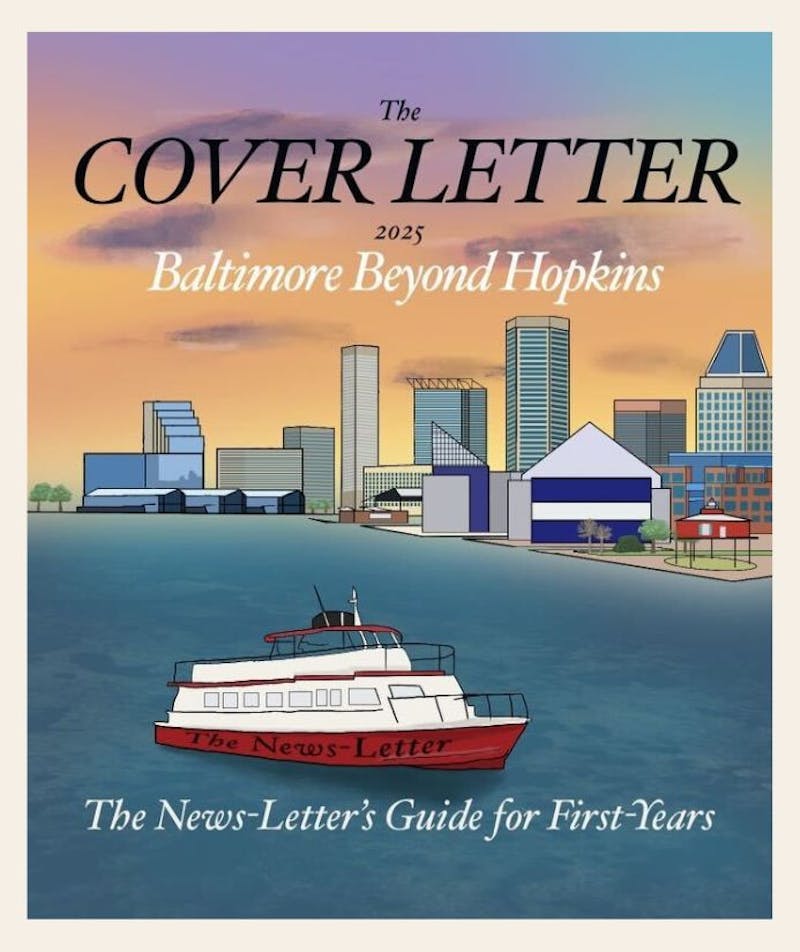The Public Service Student Loan Forgiveness Option, a portion of the College Cost Reduction and Access Act (CCRAA) of 2007, went into effect this summer.
Maryland Democratic Congressman John Sarbanes (D-MD) wrote the new provision.
According to MaKeda Scott, Director of Communications for Sarbanes, the congressman feels public service careers are important, but often not particularly lucrative.
"High levels of student loan debt significantly affect career decisions and make these careers untenable for many," Scott wrote in an e-mail to the News-Letter.
"This new law seeks to make public service an option for anyone who wishes to pursue such a career."
According to Laura Donnelly, Director of Financial Aid at the Carey Business School and the School of Education, an advantage of the Public Service Student Loan Forgiveness program is that unlike in most cases of loan forgiveness, the loans forgiven will not count as taxable income.
"Otherwise," Donnelly said, "you might have to pay more than you make in salary if you are having a $100,000 loan forgiven."
Loans eligible for the program include the subsidized or unsubsidized Federal Direct Stafford Loans, Federal Direct Consolidation Loans and Federal Direct PLUS Loans.
Professions that qualify for loan forgiveness include emergency management, military service, public safety, law enforcement, public interest law service, early childhood education, public service for individuals with disabilities and the elderly, public health, public education, public library services and school library or other school-based services.
According to Sarbanes' website, the program "will forgive remaining debt after ten years of eligible employment and qualifying loan payments. During those ten years, the Income Based Repayment (IBR) plan can help keep [loan payments] affordable."
According to the Federal Student Aid website, "Under IBR, your required monthly payment is capped at an amount that is intended to be affordable based on your income and family size."
Sarbanes' website also noted that the ten year payment period does not need to be consecutive.
According to Scott, the Congressional Budget Office predicts that there will be just less than five million new direct loans issued this year that would be eligible for the program.
However, Scott noted that since there is no requirement for individuals to participate in a career in public service, there is no way to know how many will take advantage of the loan forgiveness opportunity.
According to the Hopkins Financial Aid Office, in the Academic Year 2007-2008, 1277 undergraduate students at the Homewood Campus received Federal Direct Stafford Loans.
The JHU Career Center's website shows that of the 42 percent of graduates of the class of 2008 employed full time, 14 percent are working in either government or the non-profit sector.
In the class of 2007 and the class of 2006, 12 percent went into non-profits or government. In the class of 2005, 11 percent went into those fields.
In addition, some of the 11 percent from the class of 2008 who are working in biotechnology, pharmaceuticals or healthcare and the 7 percent who are working in education are probably eligible for the program.
In the class of 2007, 8 percent went into biotechnology, pharmaceuticals or healthcare, and 9 percent went into education. In the class of 2006, 7 percent went into biotechnology, pharmaceuticals or healthcare and 11 percent went into education. 10 percent of those from the class of 2005 who went into full-time employment chose education as their field.
At the professional schools, 1004 students are receiving loans that would make them eligible for the Public Service Loan forgiveness program if they go into public service or non-profits.
When asked if he thought the new program would encourage more graduates to go into public service, Mark Presnell, Director of the Career Center, said he was not prepared to draw conclusions.
He said that a significant number already go into public service.
Presnell believes that financial considerations are less important in graduates' decisions than the nature of the work.
"They are aware of their debt," Presnell said, "but I don't think they let it limit their options."
Nevertheless, Presnell felt that the new program is a great idea.
"We want to reward students who choose careers in public service or non-profits," he said.
Donnelly was also enthusiastic. "I think it is an idea whose time has come," she said. Speaking of those at professional schools, Donnelly said, "Many students will benefit [especially with] hiring down in the private sector, many will go into government...often at a lower salary, and this will make that easier for them."
Donnelly felt that amongst professional students, those most likely to take advantage of the loan forgivness program were nursing students, those interested in geriatric care, teaching, those looking at careers in public safety and business students going into government.
Some students are enthusiastic about the new program. Freshman Miriam D'onofrio said it increased the likelihood that she would consider public service as a career.
Other students have mixed feelings. Senior Nathan Shalom said, "It's a great idea, because it will alleviate debt that shouldn't be there." However, he thought it was limiting as well. "It funnels people into public service who wouldn't go into it otherwise," he said.
The College Cost Reduction Act, which included the Public Service Loan Forgiveness program, is budget neutral, according to Scott.
The act will not cost taxpayers anything because it is paid for by decreasing federal subsidies to private student lenders.


